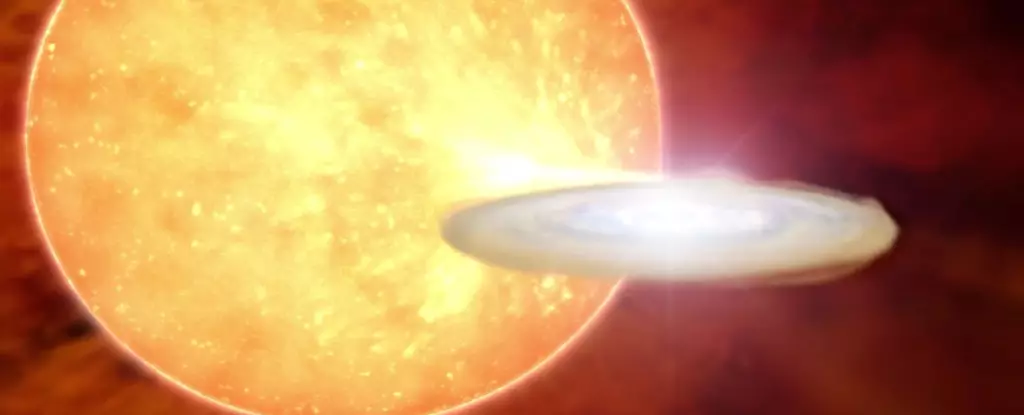T Coronae Borealis, colloquially known as ‘T CrB’, has created significant excitement among the astronomical community, particularly due to its irregular behavior as a recurrent nova. Positioned approximately 2,000 light-years away, at the junction of the Hercules, Corona Borealis, and Serpens Caput constellations, this star exhibits unpredictable outbursts that generate considerable interest. Initially heralded as a “must-see” event for 2024, enthusiasts have now turned their attention to 2025, filled with hope yet tempered by the reality of astronomical unpredictability.
The star was first documented by astronomer John Birmingham in 1866, drawing the attention of sky watchers for its remarkable fluctuations in brightness. T CrB’s last major outburst occurred in February 1946, marking a pivotal moment in its 80-year cycle of activity. This outburst pattern highlights the significance of monitoring T CrB, as events of such nature provide remarkable insights regarding stellar evolution and explosive phenomena in the cosmos. Although several novae emerge every decade or so, recurrent novae like T CrB are anomalies, making them objects of focus not only for amateur astronomers but also for professional astrophysicists.
Celestial Movements and Visibility
Currently, T Coronae Borealis rises in the eastern part of the sky around midnight, gradually transitioning into a prime position for viewing during early mornings. However, an impending challenge arises as we move towards late November, when the Sun occupies the space that obstructs our line of sight to this celestial body. Fortunately, as early 2025 unfolds, the visibility of T CrB is expected to improve, creating a window of opportunity for avid stargazers eager to witness its potential eruption. The star typically shines at a magnitude of +10 during its quiescent state, but it can escalate to an impressive +2 magnitude during significant outbursts, making it bright enough to contend with the prominent Alpha Coronae Borealis, also known as Alphecca.
The underlying mechanics of T CrB’s outbursts are fascinating. This star exists in a binary system with a cooler red giant shedding material onto its companion, a hot white dwarf. The accumulated matter on the surface of the white dwarf eventually triggers a runaway reaction, resulting in a nova explosion. This process not only enhances our understanding of stellar interactions but also emphasizes the significance of binary star systems in the study of cosmological dynamics. Recent analyses, particularly those focusing on spectral lines like the H-alpha profile, suggest a spike in temperature and accretion rates. As noted by astrophysicist Gesesew Reta, these observations suggest a possible eruption on the horizon. Still, the essence of such phenomena remains unpredictable, necessitating cautious optimism when anticipating the star’s bright return.
While T Coronae Borealis poses challenges in terms of transient visibility, its potential flare offers valuable opportunities for scientific research. Iconic observatories such as the James Webb Space Telescope and Hubble are well-positioned to engage in detailed studies should an outburst occur, contributing critical data regarding novae dynamics. The American Association of Variable Star Observers (AAVSO) and other organizations keep a vigilant eye on T CrB, providing public updates and tracking its brightness through various platforms, including daily updates accessible via Space Weather. Observational campaigns initiated by amateurs can also play an essential role in gathering real-time data, transforming individual experiences of stargazing into a collective understanding of stellar phenomena.
In a world where instant gratification is often expected, T Coronae Borealis serves as a poignant reminder of the patience required in the pursuit of astronomical wonders. The star’s erratic behavior keeps spectators on their toes, reflecting the unpredictable nature of the universe itself. As we enter 2025, the anticipation surrounding T CrB remains alive, underscoring the allure of cosmic events and the relentless curiosity that drives human beings to look up and wonder. Whether this old star will deliver its promised explosion soon remains in the domain of the cosmos, urging us all to keep looking towards the heavens.

